Exquisite Porcelain Beauties and Newly-Discovered Cloisonne Enamel Treasures at Bonhams Fine Japanese Art Sale
Bonhams showcases museum-quality Kakiemon Ladies and a rare, unrecorded, full-size model of a cloisonné enamel go-ban (games board)
The centrepiece of the sale will undoubtedly be the magnificent group of Kakiemon beauties which graces the front cover of the fine Japanese catalogue, going under the auctioneer's hammer at Bonhams New Bond Street on the 5th November. Products of a bygone era of Japan's feudal past, they were exported to the West to decorate the grand interiors of European palaces, reflecting the increasingly fashionable and sophisticated style of European Chinoiserie during the 18th and 19th century.
Estimated from £20,000-£70,000, these three figures are representations of the beautiful women (bijin) theme that was a staple of Japanese ukiyo-e paintings and woodblock prints. They wear clothing and a hairstyle prevalent in Japan during the Kanbun era (1661-1673), when such coiffure and gorgeously-patterned robes were popular among high ranking courtesans – the fashion avant-garde of the time.
Although rare and elegant Kakiemon standing ladies are known in major museum collections, the two examples presented in this sale are set apart by their arresting, painterly designs, whilst the unusual French ormolu-mounted seated beauty is a supreme example of its type. The distinctive features of the karashishi design on both the left and right side of the ormolu mount epitomise French Chinoiserie. Mounts of this type were often used in Europe to increase the dramatic quality of Chinese and Japanese porcelains i.e. attesting to the European tastes of aristocrats and wealthy bourgeois and the esteem in which these wares were held.
A shortlisted entry for the 12th Annual Asian Art in London award for the best three-dimensional work of art, the seated bijin is akin to a very similar, un-mounted seated figure in London's Victoria and Albert Museum.
All three figures come with impeccable provenance. They are by descent from a distinguished European Noble Family and have remained in the same collection for over a hundred years, acquired originally by the owners' great-great-grandfather; a notable ambassador to the Far East in the mid 19th century.
A Kakiemon model of a bijin, Edo Period, late 17th century, circa 1670-1680
柿右衛門 色絵藤模様打掛姿婦人像 17世紀後期(1670-1680年頃
Standing with one foot forward, her left hand raised to her lapel, her right hand pressed to her side, decorated in iron-red, blue, green, yellow and black enamels, her kimono with spiral designs and wisteria trailing over a trellis, her under-robe painted with cherry and other blossoms scattered over a chequered design, the base with an old label mislabelling the figure as Chinese; and marked with an inventory number 424 (partially effaced) and initials O and S. 39.3cm (15½in) high. Estimate: £20,000 - 30,000, ¥2,800,000 - 4,300,000
A Kakiemon figure of a bijin, Edo Period, late 17th century, circa 1670-1680
柿右衛門 色絵扇模様打掛姿婦人像 17世紀後期(1670年-1680年頃
She stands, smiling, one hand to her side, the other raised to her chest, her outer robe painted in coloured enamels with fans among clouds and falling maple leaves, her under-robe with cloud-shaped panels of cherry blossoms on a ground of iron-red karakusa; the base with an old label mislabelling the figure as Chinese; and marked with an inventory number 424 (partially effaced) and initials O and S. 38.4cm (15 1/8in) high. Estimate: £20,000 - 30,000, ¥2,800,000 - 4,300,000
Provenance: a European Noble Family, where it has remained for at least one hundred years. According to the family, this was acquired by their great, great grandfather, who was a notable ambassador to the Far East in the mid 19th century.
These figures are representations of the beautiful woman (bijin) theme that was a staple of Japanese ukiyo-e paintings and woodblock prints. They wear clothing and a hairstyle popular in Japan during the Kanbun era (1661-1673), when this coiffure and the loose outer robe and black sash were popular among courtesans.
This model is known with a large variety of decorations. Compare with other figures of this form but with varying painted designs, illustrated by Hayashiya Seizo, Nihon no Toji, vol.9, Kakiemon, pls.30, 31, 161-166; Sekai Toji Zenshu, vol.8, pls.49, 50; Imaizumi Motosuke, Genshoku Nihon no Meito, Ko-Imari to Kakiemon, pl.68; Soame Jenyns, Japanese Porcelain, pl.63B.
Another figure, with a slightly different wisteria design, is illustrated in the Exhibition Catalogue commemorating the succession of Kakiemon XIV, Genruyu kara gendai made Kakiemon no sekai ten, Asahi Shimbunsha, Tokyo 1983, p.47, pl.54.
A rare ormolu-mounted Kakiemon model of a seated bijin. The figure Japanese, Edo Period, circa 1670-1680, the ormolu mount French, probably Transitional-Louis XVI, circa 1760-1770, the plaque Chinese Kangxi, early 18th century
柿右衛門 色絵婦人台付座像: 婦人座像 17世紀後期(1670-1680年頃)、 台 フランス・ルイ16世様式(1760-1770年頃)、 飾り陶板 中国・康煕年間(1662-1722年)
The bijin decorated in iron-red, green, yellow, blue and black enamels and gilt, her outer kimono painted with floral heads, karakusa, ribbons and the wheel-of-the-law; her undergarments with stylised snowflakes and poem slips on a diaper ground, the stylised wood ground of the arm rest decorated in yellow and red; her black hair dressed in a central bun and adorned with a brass hairpin, her right hand clutching another brass hairpin; set on a trapezium-form ormolu mount, each side of which features a frolicking shishi within a lobed chased reserve, the front inserted with a Chinese porcelain plaque painted in famille-verte enamels with an identical shishi. The figure 28.1cm (11in) high, the mount 14cm x 20cm x 16½cm (5½in x 7 7/8in x 6½in). Estimate: £50,000 - 70,000, ¥7,100,000 - 9,900,000
Provenance: a European Noble Family, where it has remained for at least one hundred years. According to the family, this was acquired by their great, great grandfather, who was a notable ambassador to the Far East in the mid 19th century.
Although other examples of this model are recorded, compared to the standing figures (such as lot numbers 187 and 191) very few of this seated model are known. An unusual ormolu-mounted example of a seated bijin, as presented here, is rarer still.
The base is cast in five separate sections and assembled together. The distinctive features of the karashishi design on both the left and right side of the ormolu mount epitomises French Chinoiserie and were in all probability specifically made to imitate the same karashishi design painted on the central Chinese porcelain plaque, whilst the chequered design on the reverse and top of the mount as well as its unique trapeze-shape and curved back suggests that it was especially commissioned by a merchant to accommodate a three-dimensional piece - although perhaps not for this figure - since arguably, it is also quite plausible that the chequered top and reverse was added later to the base to accommodate the truncated segment of the bijin's skirt at the back; this is however conjecture.
Interestingly, the combination and the ingenious adaptation of disparate elements to create a somewhat fanciful oriental ensemble was also characteristic of the 18th century and typical of the time - affording an insight into the French taste of aristocrats and wealthy bourgeois. Mounts of this type were often used in Europe to show off Chinese and Japanese porcelains, attesting to the esteem in which these wares were held.
For a similarly-enamelled seated bijin with an identically-truncated section of garment at the reverse, see the example in the permanent collection of the Victoria and Albert Museum, London, illustrated by John Ayers, Oriental Art in the Victoria and Albert Museum, 1983, p.54.
Compare with another mounted Kakiemon figure set on a chequered plinth, see D. F Lunsingh Scheurler, Chinesisches und japanisches Porzellan in europaischen Fassungen, p.356, Abb.359.
Other examples of Japanese and Chinese porcelain figures set on 18th century French ormolu mounts can also be seen in the Musee des Arts Decoratifs in Paris.
For other seated but unmounted examples, see Soame Jenyns, Japanese Porcelain, pl. 63B (III). Another two in the the Victoria and Albert Museum, from the Collection of the late Sir Harry Garner, are published in the Oriental Ceramic Society Exhibition, Porcelain for Palaces: The Fashion for Japan in Europe, 1650-1750 (London, 1990), p.182, no.166 and previously exhibited in the Oriental Ceramic Society Exhibition, 1956, no.272 (see photograph) and illustrated by R.Soame Jenyns, Japanese Porcelain, London, 1965, pl.63G.
A further example in the China Pavilion of the Swedish Royal Palace of Drottringholm is illustrated by Ake Setterwall, The Kina Pavilion, Fogelmarck, 1972, p.174.
Other highlights in the sale are represented in the cloisonné enamel section. Japanese Art was internationally influential by the turn of the twentienth century and cloisonné produced in Japan was at the vanguard of this trend. Traditionally, cloisonné, (shippo-yaki – in Japanese), was used to embellish small pieces, such as sword fittings and was largely considered a Chinese Art form. However, from the 1830's onwards the Japanese developed a technical and aesthetic mastery that was to both heighten the visual appeal of their creations and permanently intertwine Japan and fine cloisonné enamel pieces into the minds of the Eastern and Western connoisseur.
The late Meiji and Taisho periods witnessed some of the most impressive examples of cloisonné produced to date. The full size model of a go-ban by Honda Kozaburo of Nagoya is such an example. It is hitherto unrecorded and would therefore strongly suggest that it was a piece commissioned by a wealthy patron or that it was made for International Exhibition entry in the early 20th century.
Go – the preferred game of Ancient Japan's nobles and monks and today's intellectuals - is widely considered to be the world's greatest strategic skill game, far surpassing Chess in its complexity and scope. The mathematical elegance of the rules is complemented by the great beauty of the board, especially in Japan where it has been elevated to a pinnacle of aesthetic beauty. In the West, it is the best known Japanese board game and has featured in a number of books and films, most recently Ron Howard's A Beautiful Mind.
An outstanding example of its kind, the game board is equally remarkable for its size, weight, material, extraordinary workmanship and fine condition and will exceed its modest estimates of £25,000-35,000. It is also extremely rare to find an extant signed piece by the artist whose works are as highly sought after today, as they were during his lifetime.
An extremely rare and fine cloisonné enamel model of a traditional go-ban (games board. By Honda Kozaburo of Nagoya, Meiji Period
鳳凰蝶図七宝碁盤 本多興三郎 明治時代
The elegant go floor board is raised on four integral, low bulbous legs and finely worked entirely in silver and gold wire, the four sides alternating between ho-o roundels scattered among kiri-mon interweaved amongst karakusa and confronting butterfly roundels and kiku blossoms among karakusa reserved on a transparent ground flecked with aventurine, the playing surface with the intersecting lined grid finely rendered in gold wire, the underside similarly embellished with stylised foliate motifs on a mustard-yellow ground; the heso signed Dai Nippon Honda sei, with wood storage box. 23cm x 41cm x 44cm (9in x 16 1/16in x 17 1/8in). (2). Estimate: £25,000 - 35,000, ¥3,500,000 - 5,000,000
Go (or Wei Qi as it is known in China) is considered by most Oriental game experts to be the world's greatest strategic skill game, far surpassing Chess in its complexity and scope. Of all the serious board games, go has the fewest rules and yet, the game itself is the most intellectually challenging. The mathematical elegance of the rules is complemented by the great beauty of the board, especially in Japan where it has been elevated to a pinnacle of aesthetic beauty.
The exceptionally fine condition and exquisite workmanship of this piece allow us to appreciate the remarkable technique and wide repertoire of the Japanese cloisonné enamel maker's craft and in particular, the aventurine ground which is specifically referred to by Brinkley in Artistic Japan at Chicago: A Description of Japanese Works of Art Sent to the World's Fair, Yokohama 1893, as a special characteristic of Honda's work. The artist's works are as highly sought after today as they were during his lifetime and extant signed works by Honda, particuarly of this extraordinary quality, are extremely rare.
Although go boards of ivory, wood and other materials are in abundant supply, a cloisonné enamel example of this superlative quality, as presented here, is hitherto unrecorded. This would therefore strongly suggest that it was either commissioned directly from the artist by a wealthy industrial family to present as a gift or that it was made for Bankoku Hakurankai (International Exhibition) entry.
Compare also with a go-ban which belonged to the Tokugawa Family, lacquered with maki-e patterns of tortoise-shell and aoi-mon crest, illustrated by Colin Mackenzie and Irving Finkel, Asian Games: the Art of Contest, Asia Society 2004, p.208, no.16:7.
Also embedded among the cloisonné gems is a brightly-coloured, rare and meticulously crafted gosho-guruma (ox-drawn carriage) attributed to Kawaguchi Bunzaemon of Nagoya which is expected to reach a very significant £25,000-30,000. The only other known example of such a piece is in the Imperial Collection in Japan.
A rare, unusual and elaborately decorated cloisonné enamel goshoguruma (ox-drawn carriage) Attributed to Kawaguchi Bunzaemon of Nagoya, Meiji Period
七宝置物 御所車 伝川口文左衛門 明治時代
Conceived in several detachable sections, intricately worked in silver and gilt wire with stylised designs of colourful birds and flowers, foliate motifs and confronting phoenixes, the front and sides of the cart inset with plaques in the form of sudare, rendered in transluscent yellow, from which are suspended detachable metal ribbons; the front with various floral mon scattered on a plain yellow ground; the reverse with a hinged double-door opening to reveal three drawers within; the detachable roof with kiri-mon and kiku-mon interwoven among karakusa on a black ground, the axles and two-spoked wheels decorated with foliate motifs and flowerheads on a black ground between bands of geometric patterns on a turquoise ground, the pair of long parallel shafts and yoke embellished with matching patterns consisting of stylised kiku-heads amidst tightly-scrolled karakusa on a yellow and black ground; unsigned, with two lacquered wood stands. 28.2cm x 36cm x 14cm (11 1/16in x 14 1/16in x 5½in). (15). Estimate: £25,000 - 30,000, ¥3,500,000 - 4,300,000
Another similar goshoguruma is published and illustrated: Bessatsu Taiyo: Meiji no Soshoku Kogei, p.92, ed., Kaneko Kenji, Heibonsha, Tokyo, 1990.
In modern times the miniature goshoguruma is a composite feature of the Hinamatsuri (Doll's Festival of Girl's Day) repertoire and is displayed on the sixth or seventh tier of the Hina doll platform.
All these outstanding examples of craftsmanship demonstrate the breathtaking standard of technical and aesthetic expertise that typifies so much of Japanese art, and moreover, all that can be had for what represents relatively little outlay.
Suzannah Yip, Head of Bonhams Fine Japanese Art Department comments: "We are delighted to present such a broad spectrum - from the classical to modern - of fine quality Japanese art, as part of Asia Week in London. Never before in a Bonhams' fine Japanese sale have the perspicacious collector been so spoilt for choice."

/https%3A%2F%2Fprofilepics.canalblog.com%2Fprofilepics%2F1%2F0%2F100183.jpg)
/https%3A%2F%2Fstorage.canalblog.com%2F03%2F02%2F119589%2F96711876_o.jpg)
/https%3A%2F%2Fstorage.canalblog.com%2F11%2F31%2F119589%2F94773502_o.jpg)
/https%3A%2F%2Fstorage.canalblog.com%2F20%2F83%2F119589%2F94772815_o.jpg)
/https%3A%2F%2Fstorage.canalblog.com%2F26%2F72%2F119589%2F75604929_o.jpg)
/https%3A%2F%2Fstorage.canalblog.com%2F59%2F60%2F119589%2F26458628_o.jpg)
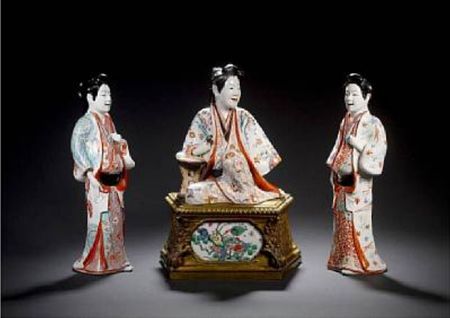
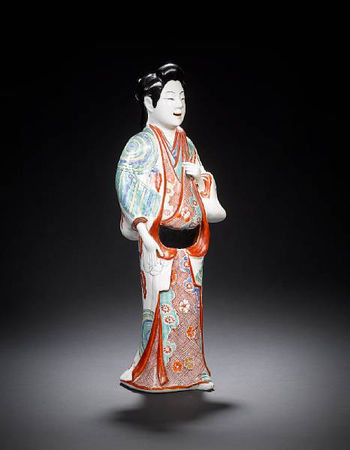
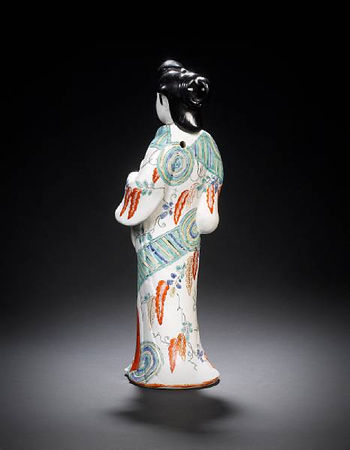
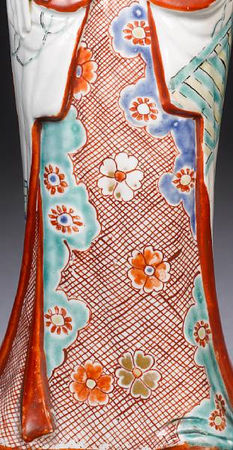
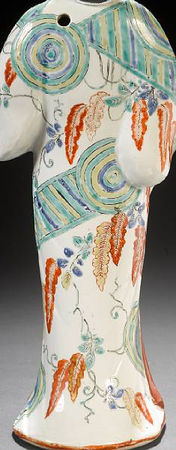

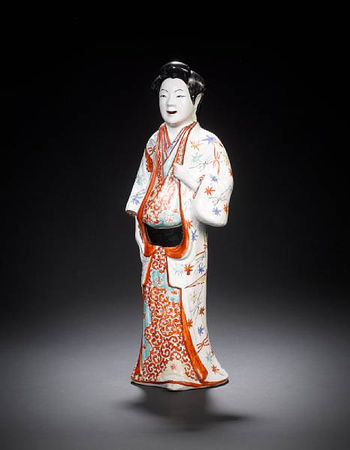
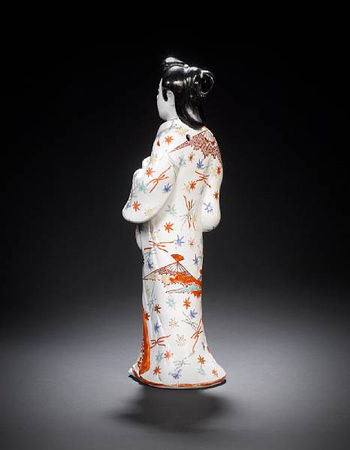
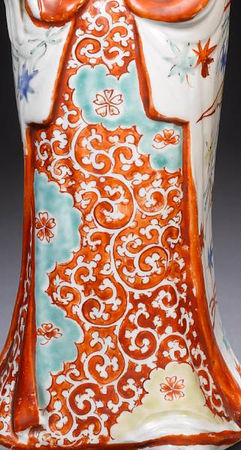

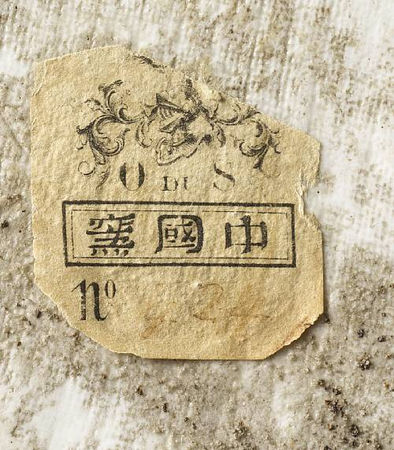
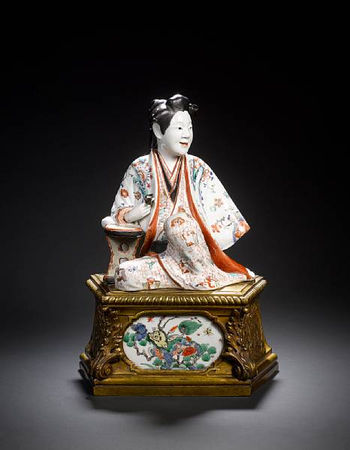



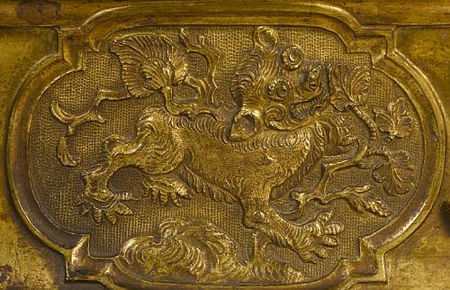



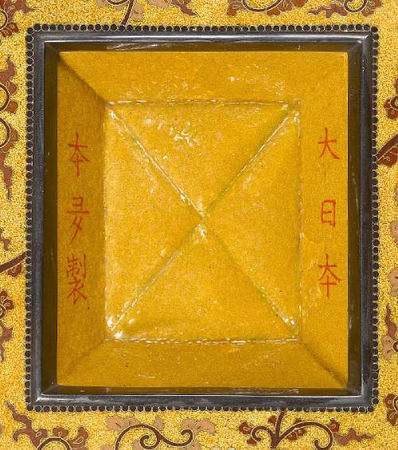

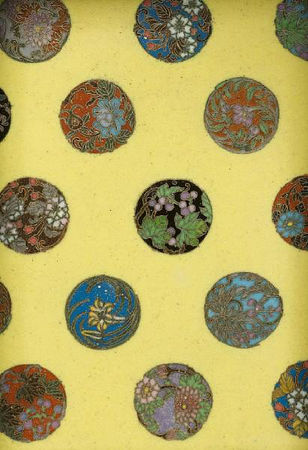

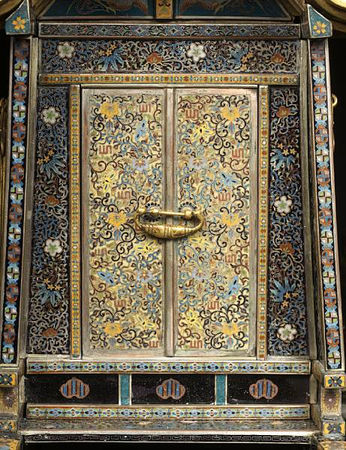



/http%3A%2F%2Fstorage.canalblog.com%2F45%2F84%2F119589%2F128381154_o.jpg)
/http%3A%2F%2Fstorage.canalblog.com%2F09%2F25%2F119589%2F128370615_o.jpg)
/http%3A%2F%2Fstorage.canalblog.com%2F05%2F95%2F119589%2F126875799_o.jpg)
/http%3A%2F%2Fstorage.canalblog.com%2F44%2F72%2F119589%2F122505070_o.jpg)